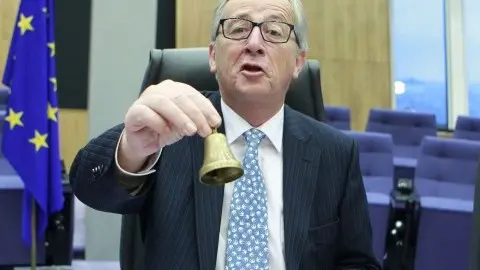Finland: Peak growth?
The Finnish economy continues to outpace the Eurozone average in 2018, but a maturing cycle, weakening competitiveness and more uncertainty about the global environment will cause growth to deteriorate. Our outlook for 2019 and 2020 is more modest from 2.6% this year to 1.6% in 2020
Has Finland reached the top of the growth cycle?
After a surprisingly strong first quarter with GDP growth of 1.2% quarter on quarter, the Finnish economy has slowed to 0.3% in the second.
The significant drag in the second quarter was the volatility in government expenditures. Consumption and fixed investment both accelerated in Q2 though, indicating that domestic demand is gaining traction. Export growth continues to contribute positively to GDP as growth has resumed.
All in all, 2018 looks to be another strong year for the Finnish economy, but downside risks are beginning to impact the growth outlook. While the recovery only started in 2Q15, it looks like growth is set to slow down in the coming years as external and internal factors take effect.
With inflation still modest compared to the Eurozone average at 1.4% in August, the pace of real wage growth is encouraging and will underpin continued healthy consumption growth in the second half of the year.
However, the outlook for business investment is more unclear. Like the rest of the Eurozone, Finnish businesses are experiencing high capacity utilisation levels, which recovered quickly after the recession ended and has now surpassed its long-term average. This should boost the outlook for investment, but as uncertainty about the global economic outlook has affected confidence, investment decisions could be delayed. For the coming quarters, we expect investment growth to slow down somewhat compared to the strong Q2 data.
The outlook for 2019 and 2020 is more modest as we expect growth to slow from 2.6% this year to 1.6% in 2020. The recovery effects are fading as the economy has quickly caught up with potential. Without catch-up effects and with more headwinds facing the exporting sector, a cooling of the economy seems likely in the coming years.
Labour mismatches are a barrier to competitiveness
While Finland has managed to achieve considerable improvements in its labour competitiveness over the past years, it seems that this will not last much longer. Signs of mismatches in the labour market are becoming a significant barrier to growth in the Finnish economy and businesses have started to raise wages again to counter the issue.
With competitiveness weakening, the depreciation of the euro over recent months will be a welcome gift to Finnish exporters
After significant negative growth, wage growth has started to pick up again and has accelerated to 2.9% YoY, the strongest wage growth since early 2014. This means that the competitiveness pact has had its success as it brought down unit labour costs, but is quickly losing impact as the economic upswing is causing labour shortages in many sectors.
Mismatches in the Finnish labour market are starting to show

Broad-based labour shortages are occurring in a background of an elevated unemployment rate. It has come down to 7.6% in July according to the harmonised European definition, still well above the 6.3% trough seen in early 2008. Meanwhile, vacancy rates have increased significantly, indicating that mismatches in the labour market have become a key issue in the economy at the moment.
With competitiveness weakening, the depreciation of the euro over recent months will be a welcome gift to Finnish exporters. The outlook for exports is therefore relatively benign in the short run, but deteriorating unit labour costs and background of free trade concerns are likely to curb the potential in the medium term. Especially given the relatively sizable role in the global value chain of Finnish businesses, Finland remains rather vulnerable to global trade developments.
The Finnish economy in a nutshell (% YoY)
This publication has been prepared by ING solely for information purposes irrespective of a particular user's means, financial situation or investment objectives. The information does not constitute investment recommendation, and nor is it investment, legal or tax advice or an offer or solicitation to purchase or sell any financial instrument. Read more
Download
Download article
17 September 2018
ING’s Eurozone Quarterly: A late-cycle economy? This bundle contains 13 Articles